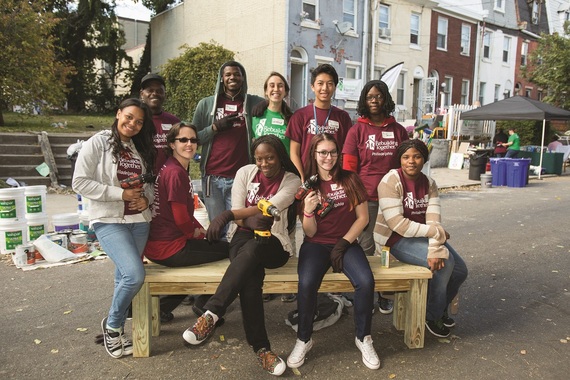If you were to stop a dozen people on the street and ask them about the health of their communities, you would likely get wildly different answers. Some might come at it from a medical perspective, like access to doctors, hospitals or pharmacies. Others might think about pollution or water quality, or perhaps consider the neighborhood's economic health and whether residents have good jobs.
Very few, I suspect, would recognize that all of these factors, and more, play a role. Despite mounting data showing the linkages between place and physical wellbeing, most of us don't think of our personal health and our neighborhoods as being part of the same equation.
LISC's own research touches on some of this, finding that significant community investments--from jobs to safety to housing to businesses--help low-income residents live better and make neighborhoods more resilient. But our random sampling might reasonably ask: do those kinds of investments really make people "healthier"?
In fact, they do. The well-being of our communities has a much greater influence on how long we live and how healthy we are than our health care system does. The latest release of the County Health Rankings offers some critical insight on the question. The Rankings--a collaboration between the Robert Wood Johnson Foundation and University of Wisconsin Population Health Institute-- measures the health of nearly every county in the country based on more than 30 different factors.
I think the backstory of those numbers is telling. If you take a look at the model, you'll see that clinical care measures account for just 20 percent of a county's overall health. The other 80 percent? Social and economic measures like education and employment; the quality of the physical environment, like housing and air/water quality; and individual health and lifestyle considerations, like smoking and obesity.
Think about that for a minute. The vast majority of what affects our health is outside the doctor's office. If we want a healthier population, we have to look at how and where we live.
It's something we have come to recognize over the years through LISC's Building Sustainable Communities strategy, which focuses simultaneously on a wide variety of community challenges in order to improve overall quality of life. The Rankings really drive home for me the value of this work - because our comprehensive community development efforts address nearly every available health factor that is measured. When viewed through the broader context of the Rankings, I think the conclusion is inescapable: investing in communities is not just a social, economic or a political calculation. It is a life and death choice that affects millions of people across the country.
What would it mean if we focused on community development as a national health strategy? Certainly, we would build more facilities that integrate health, housing, jobs and more as part of the same whole. But we would also recognize that bricks and mortar are not, on their own, a solution. Isolated investments aren't our endgame; stronger, healthier communities are.
That requires us to tackle the social determinants of health all in the same place, all at the same time. We are finding that new partnerships are powerful drivers in this regard. Neighborhood leaders are joining forces with universities, hospitals, philanthropy, law enforcement, businesses and policymakers to assess local needs, leverage community assets, ramp up community engagement and measure what works. LISC is also building national partnerships to support those local efforts--including a collaboration with the County Health Rankings & Roadmaps that connects community development to health outcomes and develops ways to disseminate best practices to help others replicate successful strategies.
LISC's Home Preservation Initiative, in Philadelphia, is one example of how the pieces come together, and one of three efforts around the country where our Rankings partnership is providing a community coach to help advance health-related goals (the others are in Boston and Indianapolis). The initiative (one of its events is pictured above) is helping low-income families repair deteriorating homes in ways that make them safer, healthier and more energy efficient. Our local partners bring a range of expertise and experience--from Drexel University's School of Public Health to Habitat for Humanity, neighborhood nonprofits and advocacy organizations.
The initiative answers a critical need related to housing but comes at it from a health viewpoint. How might this program improve air quality to help reduce the high incidence of asthma? Can it support seniors who need help in order to "age in place"? Even in the program's earliest stages, we are evaluating outcomes so we can learn for the future.
Efforts like this recognize the daunting reality: poverty is a place-based public health crisis. If we don't treat it as such--if we don't help kids get a better education, attract businesses to disinvested areas, bring grocery stores to food deserts and reduce crime--then chronic disease and premature death will continue to plague low-income people at alarming rates.
As community development leaders, it is our responsibility to educate policymakers, partners and neighbors about these critical connections. We need to collaborate in ways that bridge silos, and develop solutions that take on economic development and health as part of the same local plans.
A comprehensive approach to community development is, in fact, a comprehensive approach to health. People live better and longer when their communities are dynamic and strong.

